Japanese helmet company Shoei has introduced a limited colourway for the RF-1400 and GT-Air II.
The two popular variants will be available in a new paint scheme that combines various colours and graphics.
The popular RF-1400 now comes in an Accolade colourway that features a flat grey base with blue and neon graphics laid on top.
The helmet displays a modern and futuristic design, and it also carries a set of Japanese characters that can be found at the back of the shell. It’ll probably go well with any naked bikes, especially the Yamaha’s MT range.
Meanwhile, Shoei’s popular touring helmet, the GT-Air II gets the unique Tesseract colourway and is available in TC-1 (grey), TC-5 (glossy white with red, black) and TC-10 (blue).
The new colourway combines various patterns, including a gradient colour and asymmetrical graphics, along with a small Shoei logo on the side.
According to Shoei, all colourways for the RF-1400 and GT-Air II will be available beginning May 2022 as a limited-run production.
Ruroc first entered the motorcycle helmet market with the Atlas range back in 2019 and has since grown to become one of the most popular helmets in the market thanks to its radical, almost Master Chief (Halo) like helmet.
Despite its popularity, the first-gen Ruroc Atlas wasn’t perfect. Still, the company improved based on customer feedback and introduced Atlas 2.0 in 2020 and Atlas 3.0 in 2021, focusing on enhancing visibility and aerodynamics.
However, Ruroc decided to improve the Atlas once again, shifting its focus on comfort and protection for 2022.
Set to debut on February 18, the 4.0 retains the Atlas signature design but with a smoother carbon fibre shell that helps reduce turbulence.
The 4.0 also gets closable vents after the 3.0 non-closable vents received heavy criticism.
Ruroc also added sound-dampening ear inserts, which the company claimed helps to reduce wind noise by 20 per cent.
More importantly, the Atlas 4.0 also meets ECE 22.06 requirements, which means the helmet is now safer and offers better protection for riders thanks to the use of multi-density EPS liner and NASA-developed RHEON material.
According to Ruroc, the new helmet is also compatible with the Shockwave Bluetooth audio system, which boasts a 60-per cent smaller microphone for a better fit.
If you are a collector of anything Suzuki, then perhaps this news is for you.
The Hamamatsu factory is set to release an extremely limited-edition 100th Anniversary helmet soon.
Based on the Arai RX-7 and limited to just 100 units worldwide, a total of 30 units will be sold exclusively via lottery in Japan.
For those who are wishing to apply for the Japanese lottery, there is an application on Suzuki Japan’s website however there are certain qualifications you need to meet before applying.
Apart from you MUST live in Japan, anyone who wants to apply needs to have a credit card that Suzuki accepts and only one application per person is accepted.
The lottery application period will range between January 11 2022 and January 25 2022, with the chosen application will be announced on January 31 2022.
However, Suzuki fans located outside of Japan need to contact local dealers for further information.
The limited edition helmet is priced at JPY143,000 (RM5,314).
Looking for a full-faced helmet that’s full of useful features but doesn’t cost a bomb? Check out this SHARK Ridill 1.2 helmet, then.
The SHARK Ridill has all the features that a rider could need in a helmet, whether it’s for the daily commute, weekend sport riding or sport-touring. As with all SHARK helmets, the Ridill is designed for safety, comfort and reliability.
As for the price, the wearer can be assured of a helmet of great value. However, for a limited time only, the Ridill retails for special promotion price of RM 450 only. Please click on the links below to select your desired design.
You may purchase the models below from our BikesRepublic web store. A delivery charge of RM 50 for West Malaysia and RM 100 for East Malaysia applies to each helmet delivery.
https://bikesrepublic.com/store/product/shark-ridill-1-2-tyka-mat-black-anthracite/
https://bikesrepublic.com/store/product/shark-ridill-1-2-tyka-black-blue-white/
https://bikesrepublic.com/store/product/shark-ridill-1-2-threezy-black-orange-blue/
https://bikesrepublic.com/store/product/shark-ridill-1-2-oxyd-black-chrome-anthracite/
https://bikesrepublic.com/store/product/shark-ridill-1-2-mecca-white-black-red/
https://bikesrepublic.com/store/product/shark-ridill-1-2-mecca-mat-black-anthracite-silver/
https://bikesrepublic.com/store/product/shark-ridill-1-2-mecca-black-red-silver/
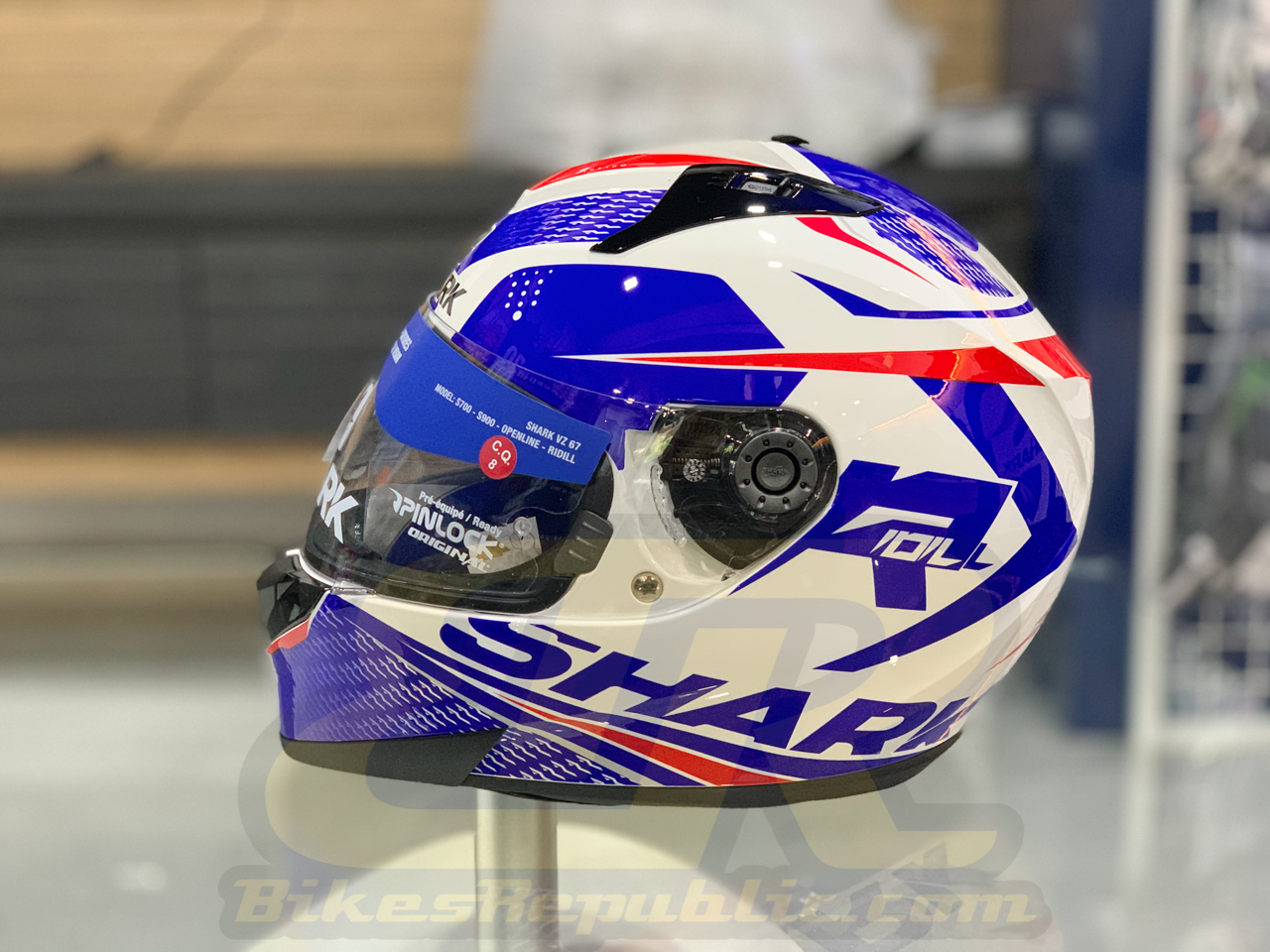
https://bikesrepublic.com/store/product/shark-ridill-1-2-stratom-white-blue-red/
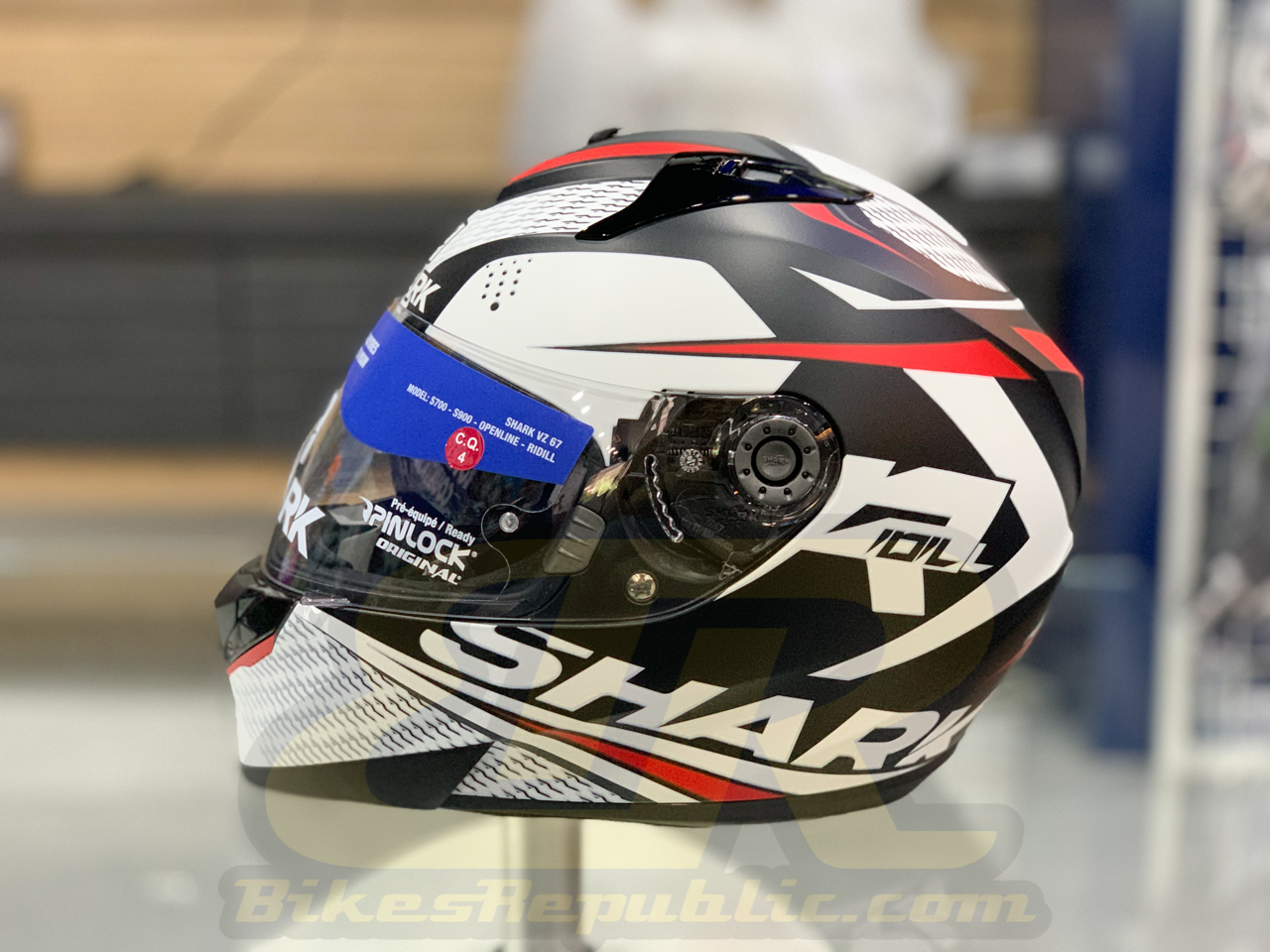
https://bikesrepublic.com/store/product/shark-ridill-1-2-stratom-white-blue-red/
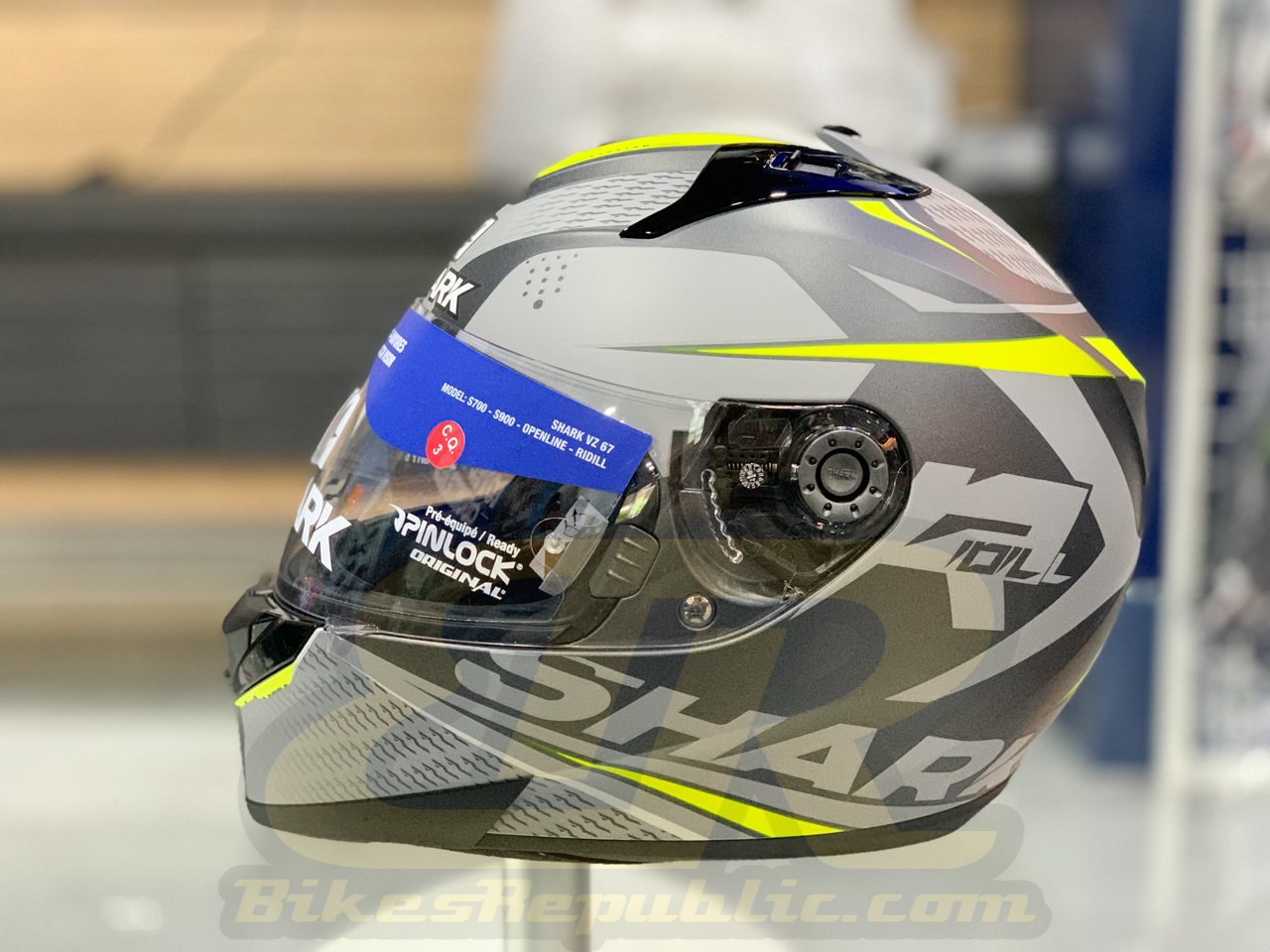
https://bikesrepublic.com/store/product/shark-ridill-1-2-stratom-white-blue-red/
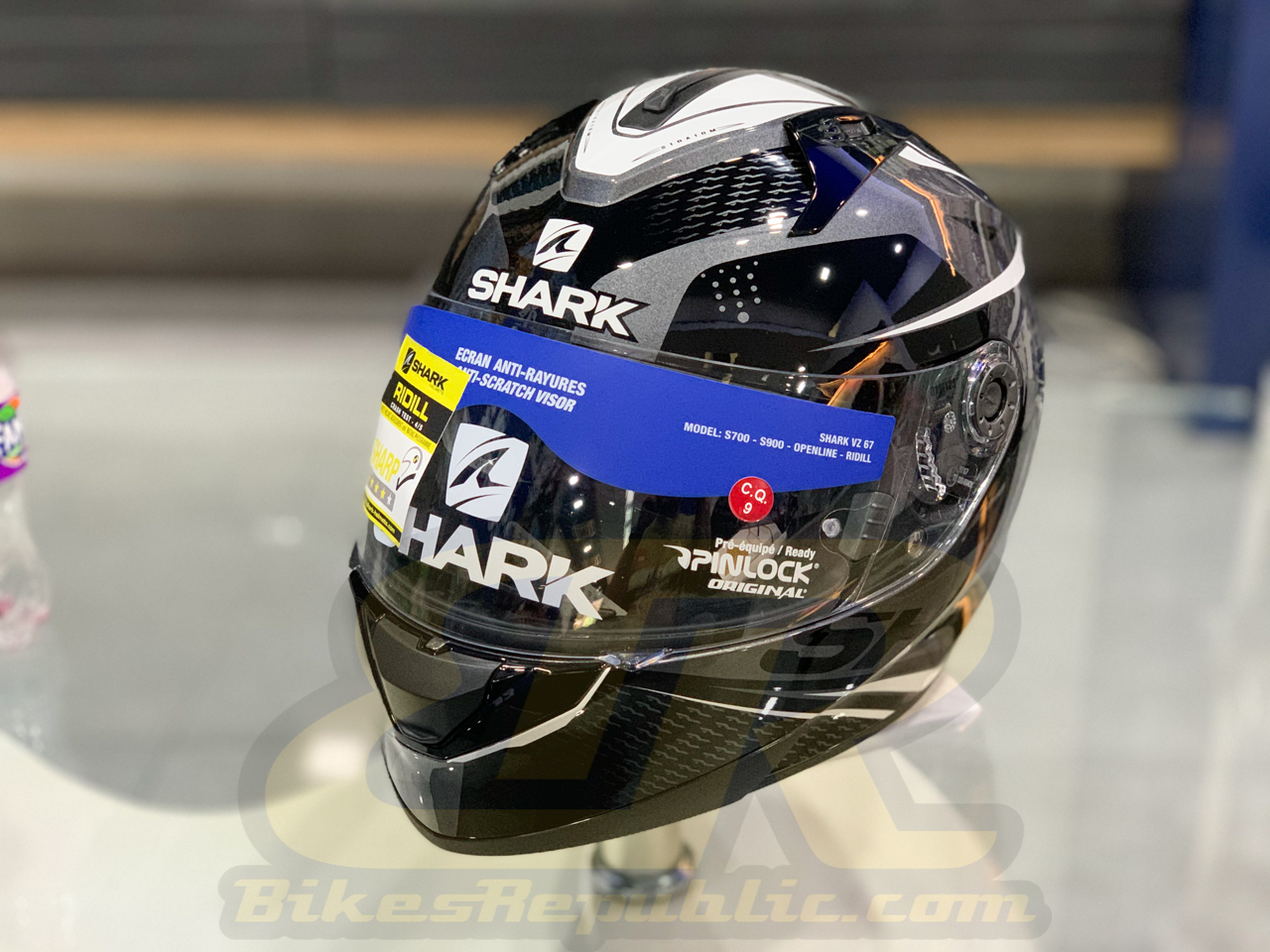
https://bikesrepublic.com/store/product/shark-ridill-1-2-stratom-anthracite-black/
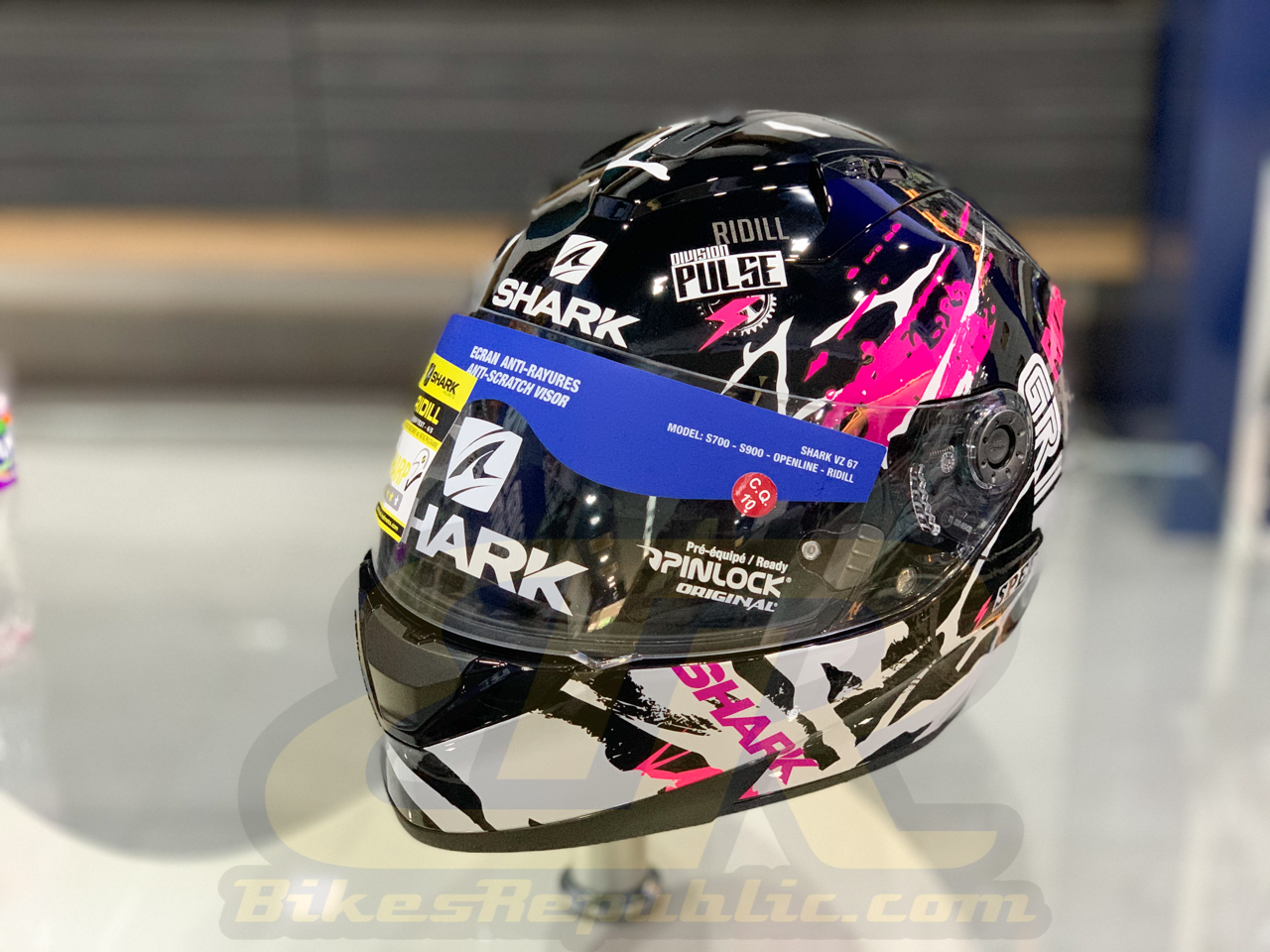
https://bikesrepublic.com/store/product/shark-ridill-1-2-drift-r-actif-helmet/
Reviewing helmets is sometimes a tricky affair. Everyone has a different head shape, although classifiable to general types. The new HJC i70, on the other hand, seems to fit most.
The HJC i70 has just made it to our shores after being released late last year. Although most foreign reviewers call it an “entry-level fullface helmet,” it’s actually slotted midway in the 2019 HJC catalogue. In fact, it’s a midrange helmet judging by its features and price point.
You could classify it as a sport-touring fullfaced helmet since there’s a sun visor, although the shape looks very sporty. But since it uses the micrometric chinstrap, it shouldn’t be used on the track and it isn’t rated as such anyway. Personally, I call it an everyday helmet.
We managed to log many useful kilometres with the helmets since picking it up about a month ago. As such, we’re able to test it while riding on different bikes and in various riding conditions.
First was the final Modenas Dominar 400 “Explore the Unexplored” convoy. The ride took us from Juru Auto City to Cameron Highlands and finally Janda Baik which lasted 12 hours in total.
Soon after that, we picked up the Kawasaki Ninja ZX-6R for test and review. It’s one fast bike! We tested it up and down Karak Highway and Genting Highlands, besides commuting on it over the weekend and to the Sepang International Circuit.
We continued with our daily commuting on this writer’s personal Kawasaki ER-6f since returning the test bike and continues to wear it today.
First off, the helmet’s shell design is quite a departure from HJC’s norms. They South Korean usually produces helmets that are of the “traditional” shape i.e. flatter sides and larger opening. The i70, on the other hand, features a shell that’s like if you took an egg and cut off a side. Consequently, the entire helmet shell is rounder.
That in turn brings up the point about fit.
I’d like to state that I’ve a round-oval head, biased towards round. Therefore, I need helmets that are more Asian in fit. Caucasians i.e. Mat Sallehs generally have long-oval head shapes.
The helmet is snugger or (tighter for those with bigger faces) compared to other HJC models such as the RPHA series of the same size. As for me, I personally like my helmet fitting slightly tighter due to necessity, in the case of testing bikes at high speeds (sportbikes!). In this case, the large size I chose felt slightly looser than a medium size fitting. This means you may have to go one size larger for a more comfortable fit. But bear in mind that the paddings will compress and conform to your facial features over time.
Being snug means the helmet feels natural on the head rather than an extension which bobs around. This is turn made the helmet feel lighter than its rated weight of 1620 grams. It also made turning the head sideways much easier, especially at high speeds.
Still, as with all HJC helmets, the comfort padding is very comfortable without noticeable pressure points. Additionally, the crown (top of the head) doesn’t smash into the EPS unlike in some helmets I’ve worn. Apart from that, they wick up sweat very well too and never left my face feeling sticky.
The shell has plenty of “panels” that work to smooth airflow. We’ve tested the helmet to 180 km/h on the ZX-6R without much turbulence. There’s some movement above that speed but it becomes stable supremely stable once I dropped my chin onto the fuel tank.
Peripheral vision has been improved by a lot. You can test this when turning your head sideways to check what’s beside you. This is very important since a rider cannot spend too much time looking over his shoulders, especially in traffic. You need as much information as possible in that one quick glance.
Vertical vision is also very good, even on a sportbike. The top part of the eyeport is only slightly visible while the head is pointing downwards in corners (see picture).
The drop-down sun visor does an awesome job of filtering out bright lights, so much so it seems to be polarized. But since the main faceshield is 99% anti-UV, the sun visor isn’t even needed at times. The sun visor has a large coverage area and drops down to just above the top of the chinbar to shield against outside light escaping through.
The “switches” on the helmet are all within easy reach, so I didn’t have to “hunt” for them. The faceshield lock is the same central type on the RPHA series. The sun visor’s switch toggle is on the left side of the bottom gasket.
Ventilation is fair, I would say. There’s a large amount of airflow on top of the head which could be felt discernibly. The front vent needs a little more ventilation but it’s fair and you could feel outside air coming up behind the faceshield. The top exhaust vents that look like shark gills work as stabilizers, too.
Sound levels are similar to those in modular helmets. But the shallow ear pockets kept most of it away. It goes all quiet with a set of Alpine MotoSafe active earplugs (they allow speech and Bluetooth media to get through while filtering out wind noise).
There is one thing to watch out, though. The shallow ear pockets may interfere with your ear lobes when you install Bluetooth speakers, although it depends on what brand and type. The Cardo Packtalk Bold uses thick JBL speakers, so they are not truly compatible. The “normal” speakers are alright, conversely, but make sure you position them properly.
All in all, the HJC i70 is a nice helmet to wear. I personally like the snugness, stability and peripheral vision. It’s a good-looking helmet and I’ve received many positive comments when I posted the pictures on my personal Facebook.
It’s ideal for your daily commute as well as sport-touring duties.
It’s priced between RM 1,029 and RM 1,419 depending on graphics, and good value for money.
For more updates on HJC helmets, please follow https://www.facebook.com/hjchelmetmalaysia/
The EICMA show is not just about new bikes but also new technologies. The MIPS liner was one such highlight at the 2018 edition..
MIPS stands for “Multi-directional Impact Protection System.” It allows the wearer’s head to move inside the helmet should there be an impact.
Wait, allows the head to move around? We have to remember that the extent of injuries resulted from not how one crashed, instead they are dependent on how one stopped after the crash.
That is exactly what the EPS (Expanded Polystyrene) liner in a helmet addresses. The EPS liner is that thick, white-coloured liner which sits between the comfort liner (cushion) and the hard helmet shell. It crushes to absorb the impact energy by extending the distance for the head to move inside the helmet. The head does not stopped abruptly, as a result. This is the same concept behind crush zones for cars.
However, according to the MIPS Board, the EPS liner is not in doing its job enough. The origins of the MIPS liner go back to the 1990s when a neurosurgeon (brain surgeon) found many brain injuries despite the patients wearing helmets.
Helmet tests involve assessing how much energy is transferred to sensors or a head form within the helmet. The impact results from striking the helmet directly at 90o. In the real world, however, contacting an object perpendicularly is a rarity. Instead, it’s usually a glancing blow (due to the helmet’s round shape, among other things).
Striking an object at an angle other than perpendicularly sends a rotational force through the helmet. The soft tissue in the brain is subjected to shearing forces. It is like tearing raw meat away from the bone. It is this very factor which causes the worse brain injuries.
With the MIPS liner in place, the head has another 10- to 15mm of movement. The MIPS Board claims that it reduces force transmission by up to another 40%.
There are eight different MIPS liners for different applications in motorcycling, cycling and snowboarding. The MIPS Board aims to push the technology to present helmet makers, but they admit that the take up is slow. However, professional riders have shown much interest.
Source: MCN
The helmet protects your head from impacts and injury, and it’s always in your best interest to take good care of it in return. However, a brain bucket doesn’t need intensive maintenance like say, the bike, but it does need some tender loving care.
We see it all the time, and yes, we’re guilty of it too.
Grabbing it by the chinbar is easier, of course, but that could result in detaching or damaging certain components, in addition to the padding behind the chinbar itself. Winding the arm under the chinstrap and out the eyeport is stable, but you chance detaching or breaking the breath deflector.
The best way of carrying the helmet correctly is to tie up the strap securely and carry it like a handbag or just use the bag which it came in.
Since a helmet is bucket shaped, it becomes a convenient basket for the bike keys, ciggies, lighter, and of course, the gloves.
If the sweat from your hands and traffic pollutants can eat away at the stitching of the gloves, it’ll destroy your helmet’s comfort lining soon enough. The gloves will also cause your helmet to smell funky.
So remember, the only thing that should be inside the helmet is your head.
This may sound as an unnecessary reminder, but do place the lid the correct way up. There’s a reason why there’s a rubber gasket that runs around the bottom.
Placing the helmet upside down will not only destroy the paint and finish but may also start to compromise the shape and strength of the shell if such mistreatment is kept up.
Manufacturers usually recommend cleaning the shell and faceshield with just soap and warm water. However, there are many helmet cleaners in the market that are convenient to carry along during a ride or to the track.
Experiment with a new cleanser on your helmet by starting on a small section before committing to the entire helmet or faceshield.
Do not ever use harsh cleaners such as dishwashing liquid or lighter fluid (to remove sticker residue). Another note: Do not ever use glass cleaner on the faceshield as it will erode the sensitive coating. Don’t ask how we found this out.
Motorcycle mirrors and handlebar ends are understandably convenient places for placing the helmet.
However, it isn’t the right thing to do, as the shape of the mirror and handlebar end may deform the EPS lining of the helmet, leaving it weaker in certain spots. The EPS liner must be as uniform as designed to spread the shock of impact.
Do make it a point to clean your lid at least once a year. This writer personally does it every three months or so, depending on usage.
Remove any removable liner, wash in warm water and clean the rest of the helmet. Use Q-Tips to clean hard-to-reach places such as vents.
A helmet should be dried out first before being stored in a cabinet or the bag.
But please use care when drying it. Best to remove the comfort liners and allow the inside of the helmet to dry naturally. Using high heat everytime the helmet gets wet will soon weaken the glue in some parts.
The comfort liners should also ideally be air-dried but if heat is needed, you may use a hairdryer for the padded side and not over the plastics, to again, preserve the glue.
Dropping the helmet from a low height may not necessarily damage it, but best to have it checked over by the manufacturer. On the other hand, a headgear that has never been dropped needs to be replaced after a maximum of five years of use from the day it first went on your head.
There are certain manufacturers that okayed the use of automotive waxes. Use the soft variety, sparingly and wax gently by hand.
The faceshield mechanism should be lubricated with silicone lubricant for better action. Arai includes the lubricant with every lid they sell.
While traditional helmet companies stick to producing helmets in the tried and true sense in terms of design and features, that focus has given room for “independents” to produce helmets with features that are eschewed by the traditionalists. That statement doesn’t mean we’re insinuating that these new helmets are bad, instead, we meant that these helmets feature out-of-the-square thinking.
A Tokyo-based company called Borderless Inc. has just launched a Kickstarter campaign for its CrossHelmet X1 smart helmet. So, what are inside this Alien/spaceman-looking helmet? It features not only integrated Bluetooth connectivity, but also ambient sound control and a heads-up display (HUD) which provides a claimed 360-degree view.
The features may sound similar to the Skully AR-1 (now in the hands of new investors – click here to read more), but the CrossHelmet X1 has a few extra notable features.
The HUD isn’t a plug-in item, instead is integrates all the technologies of the helmet. The rearview camera offers a 170-degree view which is paired to the front faceshield to provide 30 degrees more peripheral vision for a 360-degree view. Additionally, the HUD presents information such as speed, compass direction, weather, time and navigation on the foldable bifocal lens.
The CrossHelmet X1’s smartphone app provides access to the helmet’s features. You can listen to music, make/receive phone calls, and Group Talk just like if you’ve attached a Bluetooth communication device.
Unique to the CrossHelmet X1 at this moment is the CrossSound Control – the patented noise control system. It’s designed to reduce or enhance environmental sounds, depending on the rider’s needs via the smartphone app. Its algorithm is claimed to filter out road, engine and windnoise, while allowing through critical sounds such as screeching brakes and emergency sirens. Although SENA had been developing their Momentum INC (Intelligent Noise-Control) Pro helmet, the CrossHelmet is the first to make it to production with the noise control technology.
That’s not all, the helmet’s “sidepod” has a capacitive sticker which doubles up as a touch panel. Specific gestures will activate certain functions, just like smartphone.
There are also LED lightstrips on the sidepods, functioning as position lights for safety.
All these technologies are processed by a 1.2 GHz Dual Core Cortex A9 processor, powered by a safe solid-state lithium-ceramic battery.
As it is, the CrossHelmet X1 isn’t cheap, costing USD 1,799. Click here to head over to CrossHelmet site or click here for the Kickstarter site, in case you’d like to invest in one. The first units are expected to delivered in the autumn or winter of 2018.
The CrossHelmet X1 has passed the ECE, DOT and JIS standards.
The world’s first “smart helmet’ has been officially launched in Malaysia. The Jarvish Smart Helmet is distributed by RT Ride Tech Motorsport, which is the sole distributor for Malaysia, Singapore and Brunei.
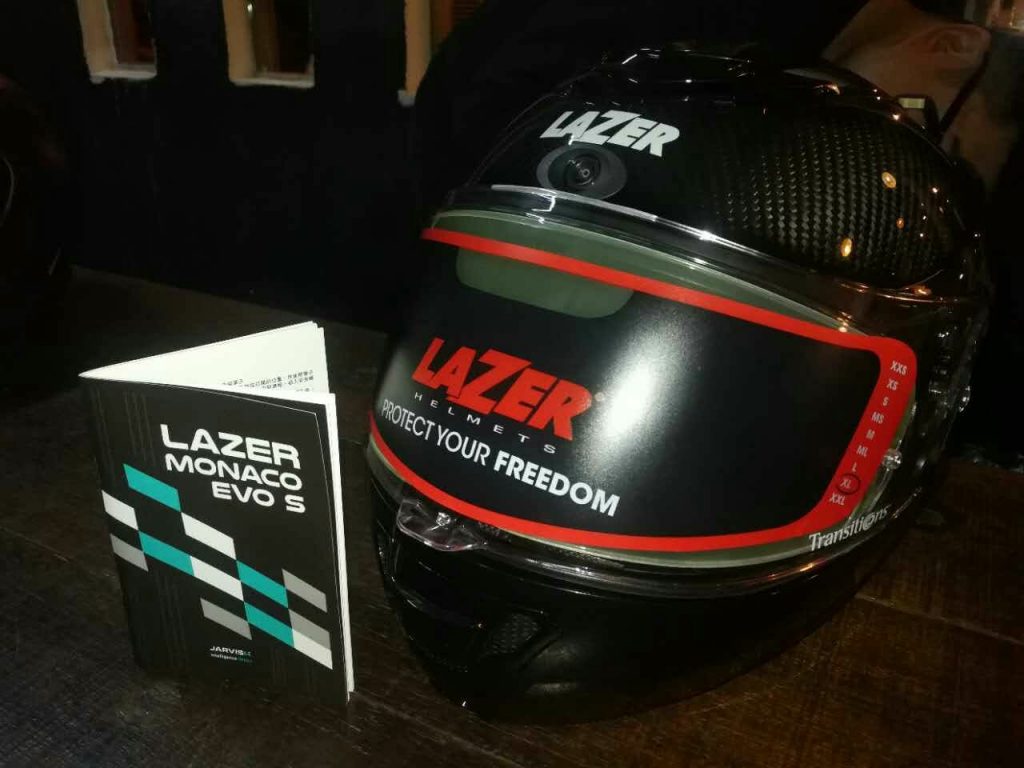
The Jarvish Smart Helmet features a built in 2k 120 degree wide angle video recorder, voice activation command, ability to receive and to reject phone calls, and it is compatible with Apple Siri and Android’s Google Go. This feature allows riders to check on the weather, location of nearby petrol stations and location of food stalls, all through voice commands. This allows the rider to keep both hands on the handle bars.
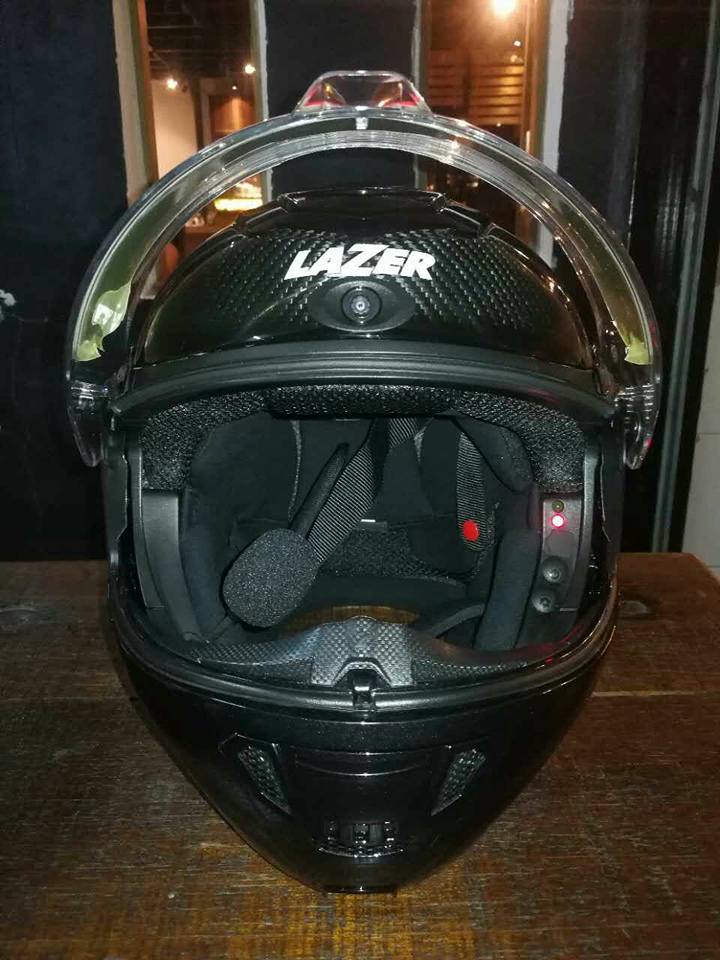
The helmet even has its own applications, which needs to be downloaded to a smart phone. This app enables the rider to download a video to his phone via wifi, or to a computer via a USB cable. It is said that the application will soon be able to offer live streaming to the riders Facebook account.
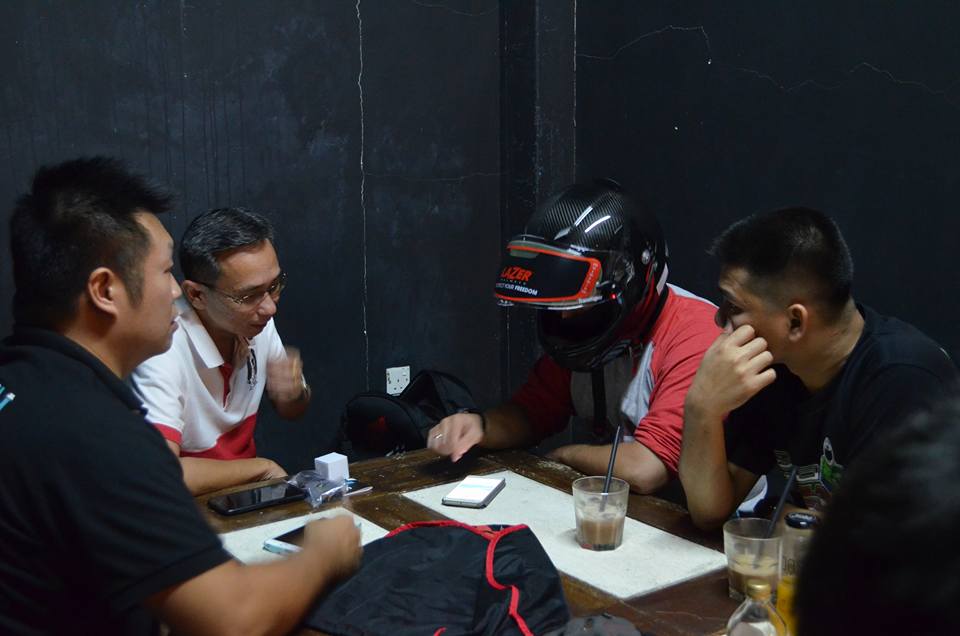
The device is operated by battery which can last up to 5.5 hours with continuous recording. Jarvish says that the battery is made of a solid state lithium ceramic military grade material and is thus an anti-explosion battery, even under extreme conditions such as piercing, collision, rupture and such, the battery stays stable, and will not leak, smoke, or burn.
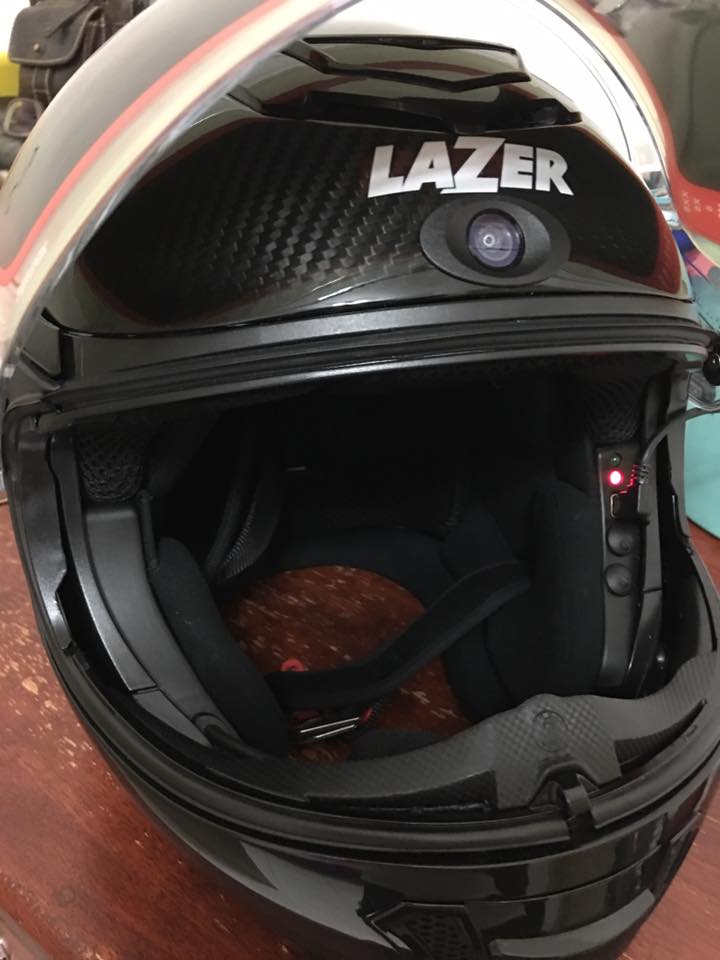
The smart helmet even has its own crash sensor, and will automatically save a video recording into a “black box” when the sensor detects an impact. The helmet supports SD memory card with up to 256GB memory, which roughly sums up to about 3 days of recording.
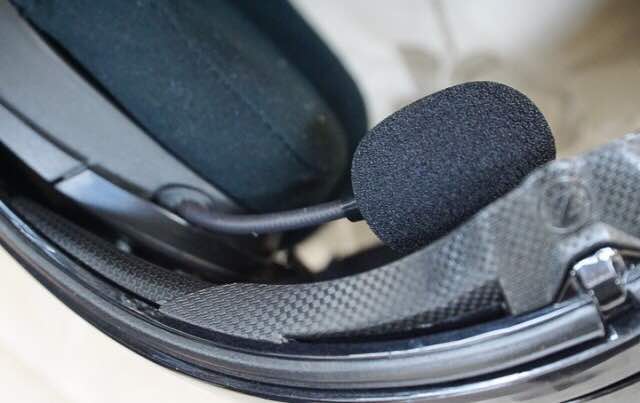
Future plans includes a crash sensor that will be able to call out a specific phone number during emergencies, and in Europe, the helmet will be able to link up to rescue units and also insurance companies.
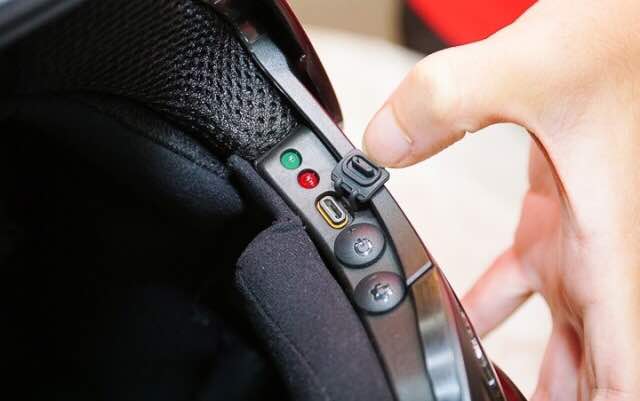
Jarvish Smart Helmet Specification:
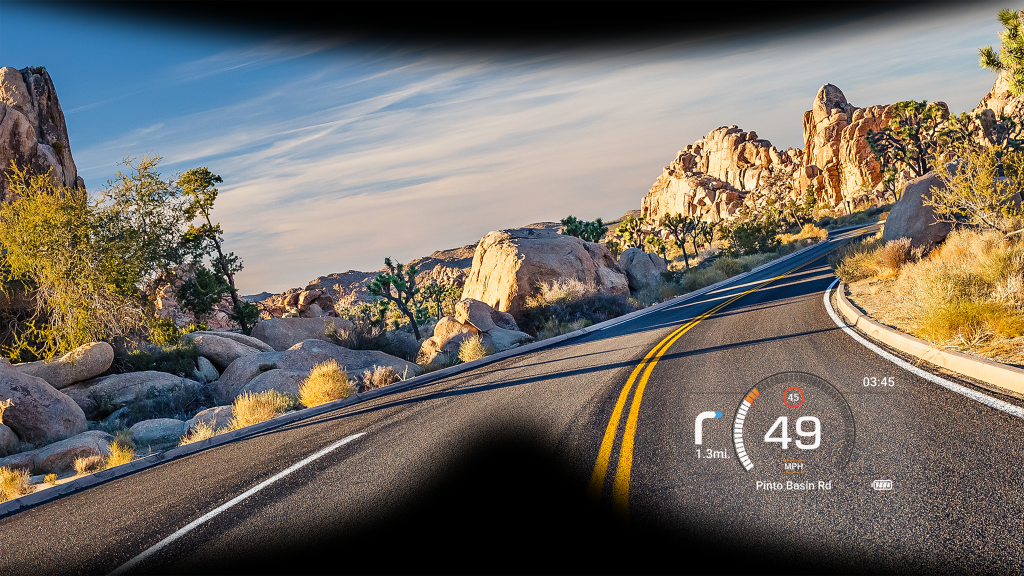
Suzuki is currently working on helmet development technology that will enable riders to receive vital information related to their motorcycle or journey via a heads-up display unit. As this is a great potential in the future of motorcycling, more and more major bike manufacturers are getting involved in this high-tech wizardry. (more…)